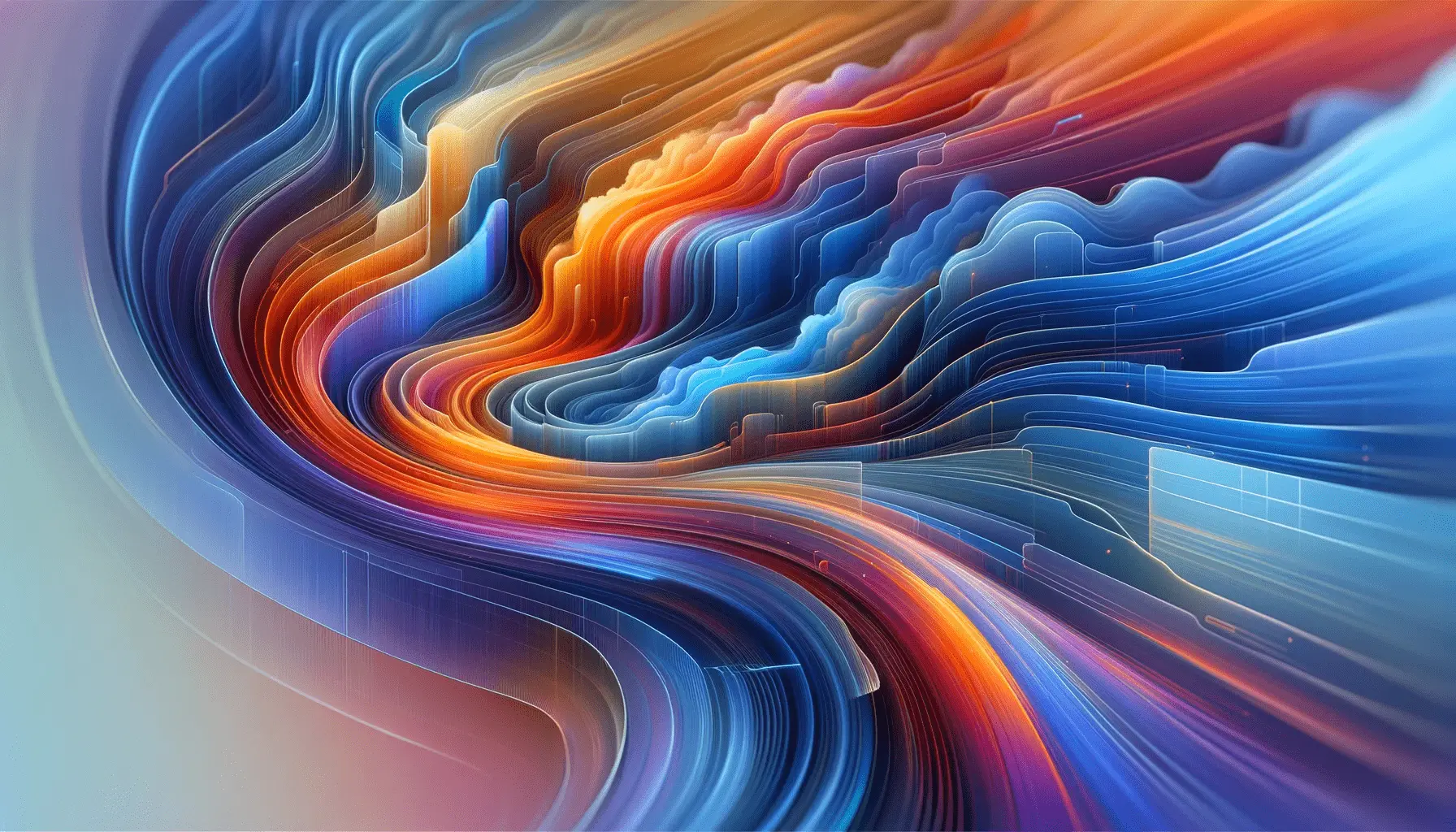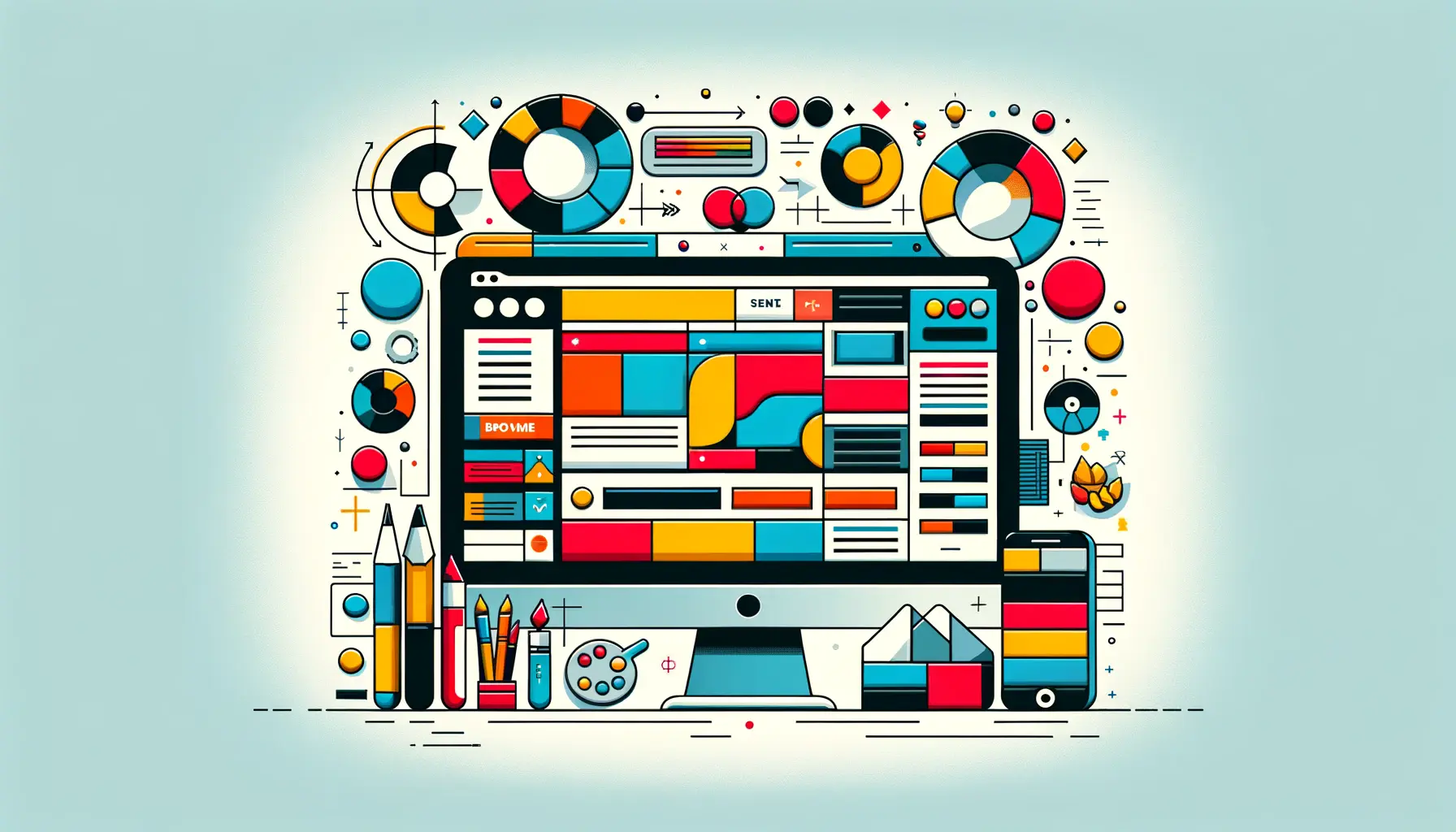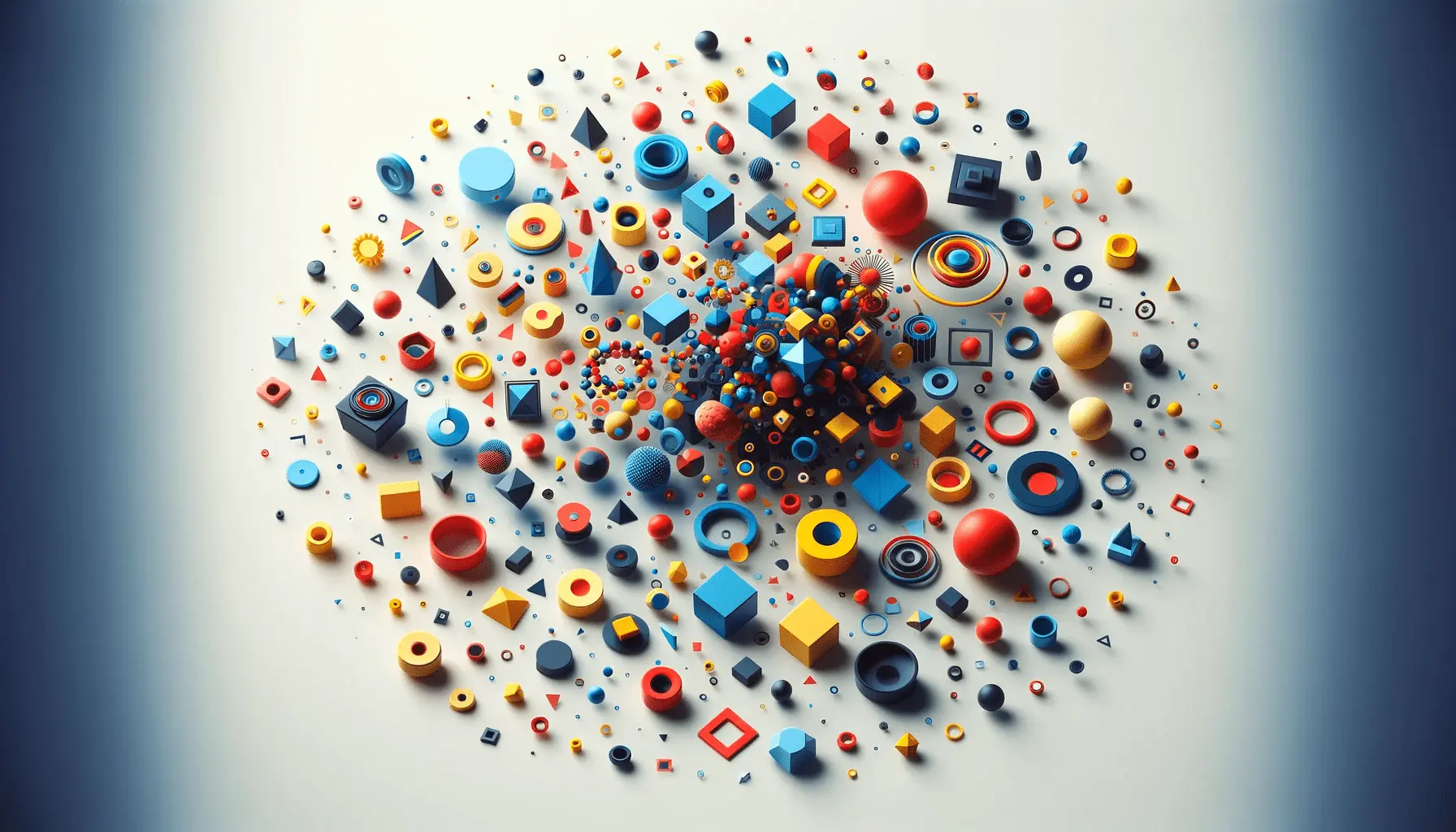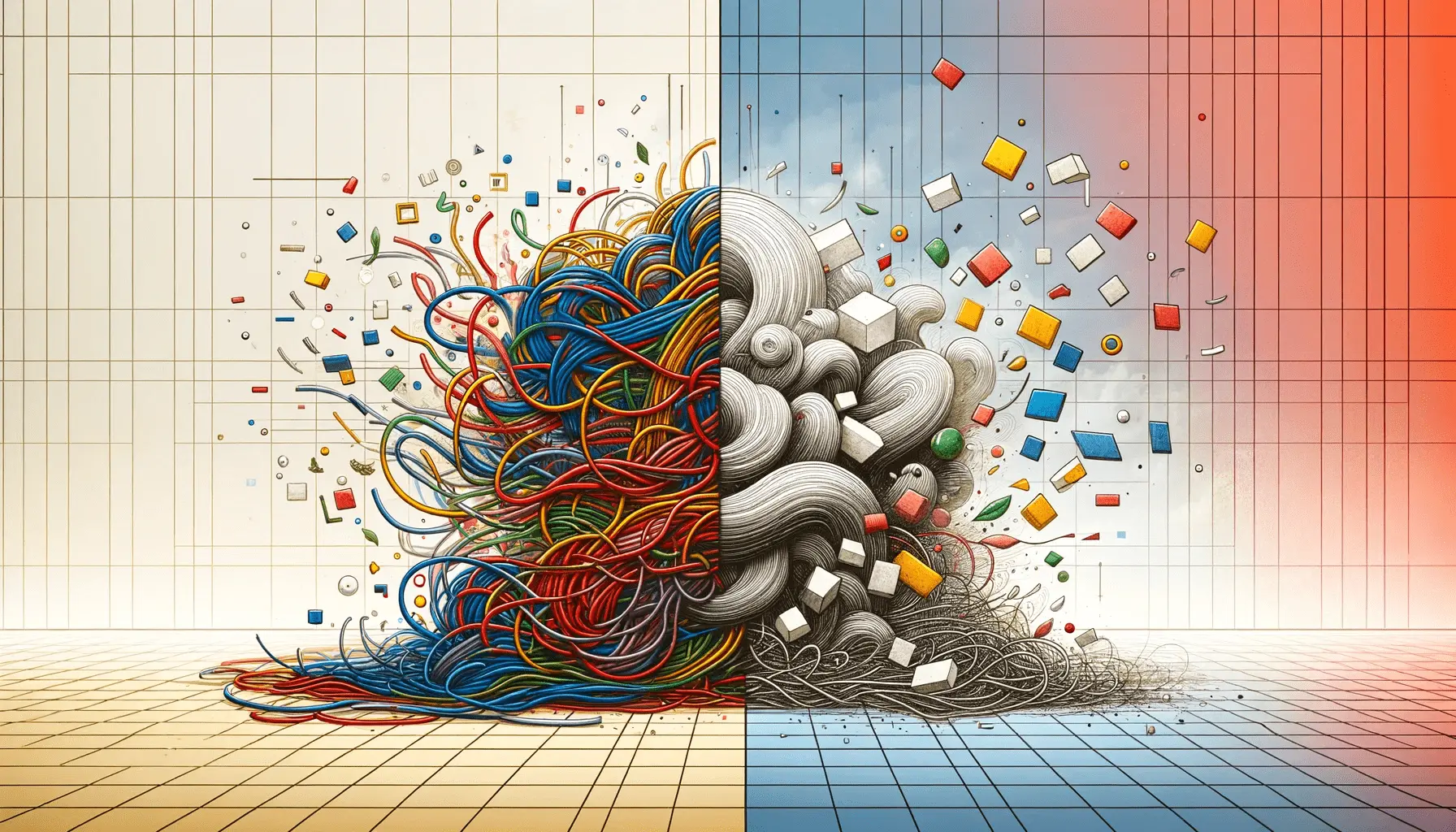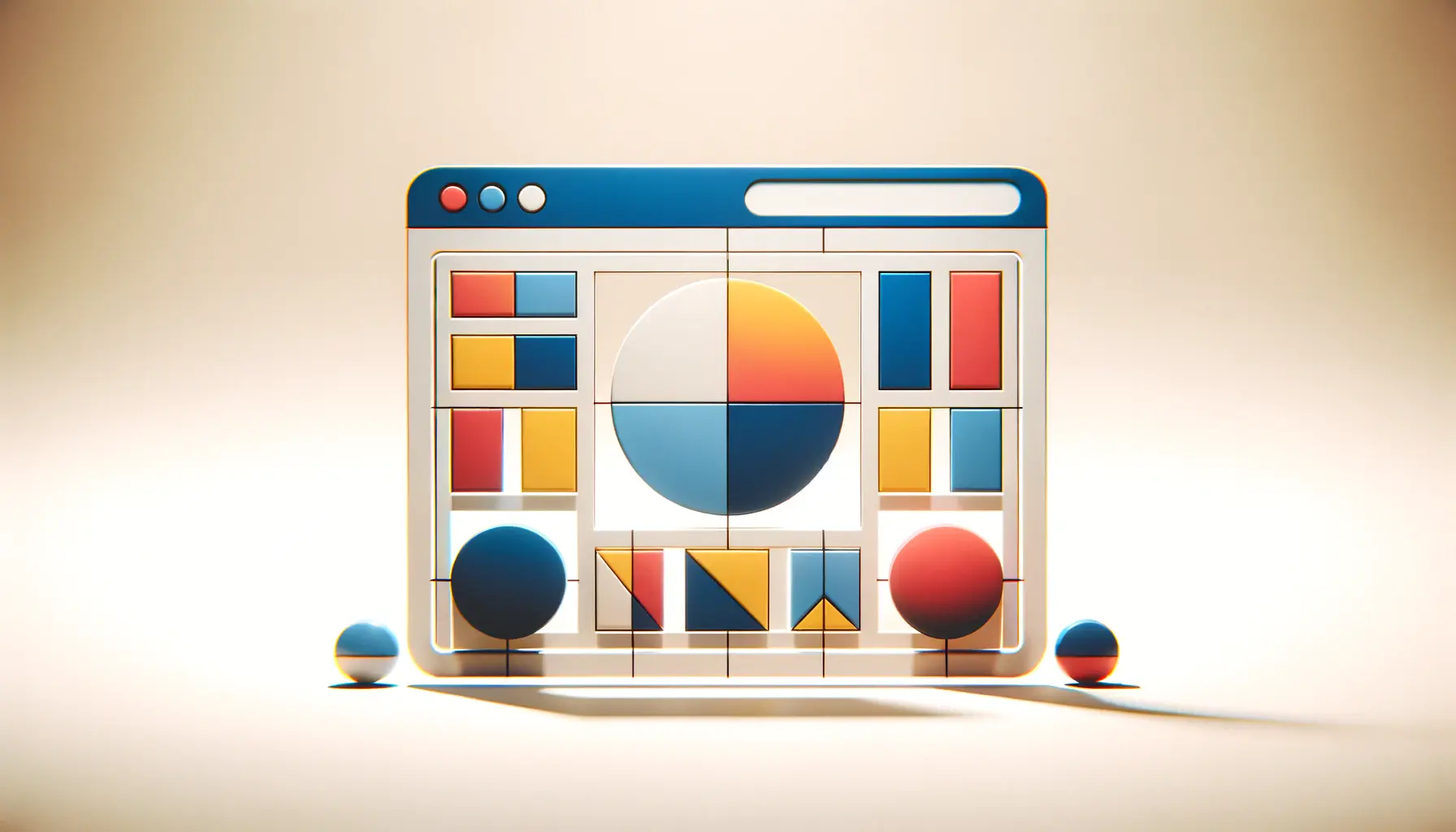Have you ever gone to a website and been drawn in by the manner in which the graphics seemed to have depth and movement?
That’s the subtle magic of gradient shading in web design.
This sophisticated design tool adds a sense of realism and depth to otherwise flat objects.
Whether you’re designing buttons, backgrounds, or entire layouts, gradient shading can transform the way users interact with your site.
It’s not just a question of colors merging into each other—it’s about creating experiences with a dynamic, sophisticated sensibility.
Here, we’ll dive into the way gradient shading works, why it’s important in modern web design, and how you can use it effectively to make your web presence more effective.
From the basics to advanced tactics, you’ll discover helpful information and creative insights.
Let’s start with an in-depth understanding of what gradient shading really is when used in web design.
- What Is Gradient Shading in Web Design?
- How Gradient Shading Enhances User Experience
- Modern Techniques of Using Gradient Shading
- Tools and Resources for Gradient Shading
- Common Mistakes and Guidelines for Gradient Usage
- Mastering Gradient Shading for Web Design
- Frequently Asked Questions About Gradient Shading
What Is Gradient Shading in Web Design?
At its simplest, gradient shading is a design technique used to blend two or more hues together to provide a smooth, seamless transition.
This creates an effect that is reminiscent of light, shadow, and depth and causes elements to stand out or recede on a page.
In web development, gradient shading is employed in order to infuse components that would otherwise become flat or staid with a more advanced, layered appearance.
The Basics of Gradient Shading
Think of gradient shading as lighting up with paint.
By strategically blending colors, you will be able to create the appearance of depth.
Some common types of gradient shading are:
- Linear Gradients: Colors transition in a line, horizontally, vertically, or diagonally.
- Radial Gradients: Colors radiate outward from a central point, creating a circular shape.
- Conic Gradients: Colors wind around a central point, commonly used on charts or stylized graphics.
These gradients are infinitely adjustable, and you can control direction, strength, and color stops in between using gradient shading techniques.
Linear vs. Radial Gradients
Choosing between linear and radial gradient shading depends on the visual impact you’re going for.
Linear gradients are great for backgrounds, navigation bars, or subtle overlays.
They guide the eye smoothly across sections.
Radial gradients, on the other hand, create a focal point and are perfect for spotlighting UI elements like buttons or icons.
Both forms of gradient shading offer unique ways to engage users visually.
Role of Color Theory in Shading
When using gradient shading, color theory is your ally.
Complementary and analogous color palettes can influence the feeling of gradients—relaxed, lively, trendy, or vintage.
Think contrast and mood.
Do you need your site to be warm and welcoming or cool and businesslike?
- Employ light-to-dark gradient shading to imply depth.
- Combine warm and cool colors for dynamic results.
- Be consistent with your brand colors in your gradient shading.
Experimenting with color combinations will give you an idea of what will best please on an emotional and visual scale through gradient shading.
Benefits of Visual Depth in UI
Depth introduced through gradient shading isn’t just about looks—it also increases usability.
Visual depth can:
- Focus attention on significant regions.
- Give visual differentiation to elements.
- Add hierarchy and structure to content.
- Render interfaces more interactive and touch-like.
When your design looks layered and intentional, users engage more naturally with your content.
You need digital areas to be intuitive—and gradient shading will let you do just that.
If you’ve never dabbled in gradient shading, you’re missing out on one of web design’s most useful tricks.
In the second part, we’ll observe how this simple visual illusion can significantly enhance the entire user experience.
Gradient shading blends multiple colors to create the illusion of depth and lighting—essential for elevating flat web elements into visually compelling components.
How Gradient Shading Enhances User Experience
Design is not just about looks—it’s about users feeling something.
And that’s exactly where gradient shading comes in.
When used intentionally, it has the potential to set up emotion, readability, and interaction on a whole new level.
Not only is it an aesthetic choice, but it’s a functional one that impacts the way users are engaging with your website.
You might not even realize it at first, but the way light and color flow through elements on a page can affect users’ perception of your brand.
Let’s talk about how gradient shading contributes to a more engaging and intuitive user experience.
Establishing Focus and Visual Hierarchy
Gradient shading is a great way to guide the user’s eye to what’s most valuable.
By playing with depth, lightness, and color saturation, you can create a natural flow that guides attention to calls-to-action, navigation, or key messaging areas.
- Highlight CTA buttons with the use of subtle gradient shading that guide the eye.
- Use gradient overlays to separate content sections from each other without harsh lines.
- Lead users through your layout by using directional gradient shading from top to bottom or left to right.
By layering gradients effectively, you’re not just decorating—you’re designing with intent through gradient shading.
Improving Aesthetic Appeal
Let’s be honest—flat designs can sometimes feel flat.
Gradient shading adds visual texture that can instantly give a site a boost.
It adds personality and ambiance, allowing you to achieve a look that’s modern and high-end.
With the rise of neumorphismA modern UI design style that mimics physicality using soft shadows and highlights to create a soft, extruded plastic look. and glassmorphismA UI design trend characterized by frosted-glass effects with background blur and transparency. UI trends, gradient shading has become even more relevant.
Both of these aesthetics rely quite a bit on light and shadow effects to fake depth and realism.
And that’s exactly what gradients are perfect for.
Supporting Brand Identity
Your brand possesses a personality—bold, calming, futuristic, or earthy.
Gradient shading enables you to express that identity visually.
By blending your brand colors in innovative ways, you can achieve a continuous look and feel on each page.
- Apply brand-based gradient shading to background transitions.
- Incorporate subtle gradients into logos or typography to reinforce brand voice.
- Develop consistent visual language with gradient-themed UI elements.
This doesn’t just make your site look great—it makes it feel like you.
Driving Engagement Through Design
Want users to stick around longer?
Interact more?
Click more?
Gradient shading can gently push them in that direction.
Gradients create movement and dimension, and that piques users’ curiosity.
They’re more inclined to scroll, hover, and poke around when the interface feels alive and responsive.
- Interactive buttons with gradient shading hover effects feel more tactile.
- Background transitions create a sense of travel as users scroll.
- Gradient shading used on charts or data visualizations aid in making content more consumable.
And the more engaged users are, the more likely they’ll convert—whether that’s making a purchase, subscribing, or contacting you.
At the end of the day, gradient shading is more than aesthetics.
It is a tool that enhances usability, enables exploration, and establishes emotional connection.
Moving forward, let’s discuss the nitty-gritty techniques you can use to effectively use these gradients throughout your website.
Strategic use of gradient shading improves usability by drawing attention, creating visual structure, and building a more immersive brand experience.
Modern Techniques of Using Gradient Shading
Now that we’ve covered how gradient shading improves user experience, let’s discuss how you can actually use it with the best and most innovative ways of today.
With the development of CSS, design tools, and creative trends, designers have more liberty and capability than ever before when it comes to using gradients.
Whether you’re a new web developer or an experienced one, having these techniques in mind will make your web elements appear fresh and professional.
Here, we will go past the basics and explore particular, hands-on strategies to use gradient shading in your projects.
CSS Gradients: Code-Level Use
CSS is probably one of the simplest and most direct ways to use gradient shading in web design.
No image files for you—only a few lines of code.
CSS supports multiple gradient types:
- Linear Gradients: Create a linear line color transition. Example
- Radial Gradients: Colors radiate from a central point. Example
- Conic Gradients: Rotate colors around a central axis. Perfect for circular menus and charts. Example
CSS gradients are responsive and lightweight, perfect for performance-oriented web projects using gradient shading.
Working with SVG and Canvas for Dynamic Shading
For finer or more animated gradient shading, Scalable Vector Graphics (SVG) and HTML5 Canvas are good alternatives.
They allow you to create high-resolution, detailed gradient shading effects that can respond to user interaction or animation.
- SVG Gradients: Ideal for crisp, scalable graphics like icons or UI elements.
- Canvas API: Suitable for dynamic graphics or live rendering of custom gradient shading effects.
These are more technologically challenging but offer intricate customization for advanced projects.
Mixing Gradients with Textures
To add richness, try mixing gradient shading with soft textures.
This mix creates a tactile texture and visual depth that flat color simply can’t achieve.
- Use transparent textures placed over gradients to produce extra depth.
- Use grunge or noise textures to avoid too shiny of an appearance.
- Combine gradients with photo overlays for immersive backgrounds.
This is especially awesome for hero sections and full-screen designs using gradient shading.
Gradient Layering with Transparency
Modern web design uses various layers of gradient shading in a bid to create complex, interactive effects.
Through transparency (with RGBAA color model that defines red, green, blue, and alpha (transparency) channels for more flexible color rendering in web design. or HSLAA CSS color format that stands for hue, saturation, lightness, and alpha (transparency), offering a more intuitive way to define colors. color values), gradients can readily engage with background images or content superimposed over them.
Play around with superimposing two or more gradients at different angles or opacities to create dynamic visual effects.
This works particularly well for overlays, modal backgrounds, or hover effects that need a soft, responsive look.
Accessibility Considerations with Shading
Though shading with gradients makes things more visually appealing and richer, be sure to keep accessibility in mind.
Accidental use of gradient shading can erode contrast and hurt readability.
- Give plenty of contrast between the text and gradient backgrounds.
- Don’t place gradients behind small or thin fonts.
- Utilize testing tools with accessibility to ensure your work is WCAG compliant.
Thoughtful application of gradient shading should enhance—not hinder—user experience for everyone.
With the right techniques and a creative mindset, gradient shading becomes a powerful tool in your web design toolkit.
Up next, we’ll look at some of the best tools and resources that make working with gradients even easier and more fun.
Using CSS, SVG, or Canvas for gradient shading not only adds creativity but ensures lightweight and scalable solutions that boost site performance.
Tools and Resources for Gradient Shading
You don’t have to do gradient shading entirely manually.
There are plenty of tools, platforms, and resources that will make working with and creating gradients faster, easier, and more fun.
Whether you’re designing complex color gradients, prototyping UI elements to use with your gradients, or making sure your gradients match your brand identity, these tools will speed up your workflow.
Let’s go through some of the handiest tools you can start using today to take your gradient shading in web design to the next level.
Best Gradient Generators for Designers
For quick and bespoke gradient shading designs, these online tools are your best friends.
They enable you to experiment with color stops, angles, and preview effects in real time.
- CSS Gradient: A free, simple tool that generates linear and radial gradients with real-time previews and copy-and-paste CSS code.
- UI Gradients: Offers a curated collection of beautiful gradient presets ready for single-click copying.
- CoolHue: A gradient color palette for modern UI designs, perfect for backgrounds and buttons.
These tools simplify experimenting with harmonious and aesthetically pleasing gradient shading.
Popular CSS Frameworks that Support Gradients
If you’re building with CSS frameworks like Tailwind or Bootstrap, you’re in luck—these provide out-of-the-box utilities to implement gradient shading without writing custom code.
- Tailwind CSS: Use utility classes like bg-gradient-to-r or from-blue-500 to-purple-600 for quick, responsive gradient backgrounds.
- Bootstrap: Bootstrap does not have built-in gradient classes but supports custom SCSS variables, which makes adding gradients to your elements a breeze.
These frameworks allow you to stay productive while still achieving visually polished outcomes with gradient shading.
Figma and Adobe XD for Gradient Prototyping
UI design tools like FigmaA cloud-based design and prototyping tool used for UI/UX design and real-time collaboration. and Adobe XDA vector-based user experience design tool for web and mobile applications, developed by Adobe. make it extremely easy to apply and test gradient shading in UI mockups.
Both linear and radial gradients are possible on these tools, with detailed control over angle, position, and opacity.
- Apply gradients to shapes, text, and images with easy drag-and-drop controls.
- Leverage gradient overlays to add depth and lighting effects to your mockups.
- Collaborate with teams in real-time when editing gradient shading options.
These kinds of tools are ideal for testing out design ideas before jumping into code.
AI Tools for Gradient Suggestions
AI is changing how we do design, and gradient shading is no exception.
Some AI-powered platforms now offer suggestions for color palettes based on your brand’s colors, industry trends, or mood.
- Automatically generate gradient palettes based on your existing theme.
- Get smart suggestions for color transitions based on usability and contrast.
- Speed up decision-making when you’re unsure about colors.
AI-driven tools help eliminate the uncertainty of gradient shading design while keeping your designs fresh and on-brand.
Open-Source Libraries and Plugins
For people who like to build custom components, various open-source libraries and plugins help you easily incorporate gradient shading into your workflow.
- Gradients.css: A lightweight CSS framework with dozens of pre-built gradient classes.
- GradientJoy: A JS plugin that generates random gradients for dynamic UI.
- Blobs & Gradients Generators: Tools that blend organic shapes with gradient fills for abstract designs.
These tools are time-savers and enable you to incorporate gorgeous gradient shading without reinventing the wheel.
Thanks to all these robust tools in your toolkit, you don’t need to be a graphic design whiz to master gradient shading.
Next, we’ll review pitfalls to avoid—and best practices to follow—so you can confidently use gradients with ease in your web projects.
Leveraging tools like Figma, Tailwind, and AI gradient generators accelerates your workflow while ensuring brand consistency and visual harmony.
Common Mistakes and Guidelines for Gradient Usage
Gradient shading can be one of the mighty tools in your design arsenal, but it gets abused fast if you’re not careful.
Poorly chosen, overly complex, or improperly used gradients can hurt readability, disorient users, or look outdated.
For optimal use of gradient shading, you need to strike the right balance between creativity and clarity.
Below is a guide to the most common gradient shading mistakes and some tips on best practices to help you create clean, accessible, and visually appealing designs.
Avoiding Overuse and Clutter
The worst crime when using gradient shading is overdoing it.
If gradients are applied to all elements, they lose impact and make the layout feel chaotic.
- Limit gradients to critical design areas like backgrounds, buttons, or hero sections.
- Blend gradients with neutral or solid colors to create visual breathing room.
- Employ gradient shading sparingly—where it enhances, not distracts.
Balance ensures your design stays clean and focused.
Choosing the Proper Color Transitions
Poor color selection can lead to clunky transitions or overly intense visuals.
Effective gradient shading relies on pleasant color blending and contrast.
- Limit yourself to 2–3 colors to avoid muddy transitions.
- Test contrast ratios for accessibility using tools.
- Align your gradient palette with your brand identity and design goals.
Great gradients are smooth, intentional, and brand-consistent.
Keeping Consistency Between Pages
Random use of gradient shading can break your visual identity.
If one page uses a cool gradient and another suddenly switches to a warm one without context, it confuses users and undermines professionalism.
- Create a gradient shading style guide with approved color palettes.
- Ensure every member of your design team follows the same gradient rules.
- Use your core gradient theme consistently across headers, buttons, and backgrounds.
Consistency builds user trust and strengthens your brand presence.
Optimizing for Mobile Responsiveness
Gradient shading can behave differently on smaller screens, especially when used in backgrounds or overlays.
What looks great on desktop may feel cluttered or pixelated on mobile.
- Test gradients across various screen sizes and devices.
- Use CSS media queries to adjust gradient direction or scale for mobile.
- Limit heavy gradient textures to maintain mobile performance.
Responsive gradient shading ensures a seamless user experience everywhere.
Testing Shading Across Browsers
Not all browsers render gradient shading the same way.
Inconsistent rendering may result in color banding, jagged edges, or layout issues.
- Preview gradients in Chrome, Safari, Firefox, and Edge using browser testing tools.
- Use fallback background colors or simpler gradients for older browsers.
- Avoid relying solely on experimental gradient properties unless fully tested.
Reliable gradient shading guarantees a polished look across all platforms.
By following these best practices, you’ll steer clear of common pitfalls and unlock the full power of gradient shading.
When done right, gradients add subtle elegance, guide attention, and express your brand’s personality—all while enhancing usability and visual harmony.
Now that you’ve got the full picture, it’s time to apply everything you’ve learned and build designs that truly stand out—one shade at a time.
Overusing gradients or choosing poor color transitions can clutter your design—keep it intentional, consistent, and accessible.
Mastering Gradient Shading for Web Design
Why Gradient Shading is More Than a Trend
Gradient shading has emerged as far greater than a short-lived design trend.
It is a valuable tool for designing modern, interactive, and accessible web interfaces.
From improving user experience and guiding attention to building visual depth and expressing brand personality, gradient shading adds both form and function when wielded with precision.
Throughout this article, we’ve taken the journey through how gradient shading adds value to digital design.
It’s not just color transitions—it’s about creating emotion, encouraging engagement, and designing on purpose.
Key Takeaways for Using Gradient Shading Effectively
If you’re ready to get started integrating gradient shading into your workflow, remember these key points to ensure success:
- Use gradients with purpose to create focus, hierarchy, and engagement.
- Use gradients wisely—too much usage can overwhelm your design.
- Use color transitions that complement your brand and improve readability.
- Consistently use gradients throughout pages and elements.
- Optimize gradients for each screen resolution and test them on various browsers.
Tools and Techniques to Optimize Your Workflow
You don’t need to be a design wizard to create awesome gradient shading effects.
Contemporary design tools, libraries, and frameworks make gradient shading simpler than ever before.
- Utilize web-based gradient makers for instant, adjustable results.
- Experiment with design platforms like Figma and Adobe XD for prototyping gradients.
- Take advantage of CSS frameworks like Tailwind and Bootstrap for instant implementation.
- Try AI-powered tools to generate dynamic and on-brand gradient color palettes.
- Leverage open-source libraries to speed up development.
One Gradient Puts Your Design Journey in Motion
Gradient shading is one of the rare design techniques that balance form and function.
It has enough power to revolutionize how people experience and interact with a site.
But its true potential lies in the attention to detail in how it’s used.
As you move forward in your own design process, remember to test, experiment, and iterate.
Let your gradients guide the user, support your content, and assert your brand.
From the hero section of a showstopper to the subtle background effect, correct application of gradient shading can elevate your design.
So now it’s your turn—go ahead and put what you’ve learned into practice.
Start simple, stay consistent, and let your creativity shine through every shade.
Mastering gradient shading means aligning aesthetic appeal with usability, guiding the user’s eye, and reinforcing brand presence throughout your site.
Quality web design is key for a great website! Check out our service page to partner with an expert web design agency.
Frequently Asked Questions About Gradient Shading
Here are some of the most common questions about applying gradient shading in web design, along with brief and helpful answers to assist your creation process.
Gradient shading is a technique that blends two or more colors to create depth, movement, and dimensionality in web objects so that they appear more dynamic and attention-grabbing to users.
You can apply gradient shading using CSS properties like linear-gradient() or radial-gradient(), establishing the direction and color stops in your style rules.
The most widely used ones are linear, radial, and conic gradients.
Each of them yields a different visual flow, based on design goals and the objects being styled.
No, not if done properly.
Make sure that there is high contrast between background gradients and text, avoid complicated overlays, and test your design across devices to ensure accessibility for every user.
Yes, it’s very effective.
Gradient shading can add emphasis and interactivity to buttons and call-to-action areas, making clickable objects more visually appealing and encouraging users to engage.
CSS-based gradient shading has minimal performance impact.
However, large gradient images or layered effects may increase load times on mobile, so proper optimization is necessary.
Tools like CSS Gradient, UI Gradients, and Figma offer fast, intuitive interfaces for generating and editing gradient shading without needing to write code.
Most provide live previews and ready-to-use CSS.
Not necessarily.
Excessive use can clutter your design.
Apply gradient shading strategically to highlight key areas while maintaining a clean, cohesive visual layout.
Use browser testing tools or services to preview how your gradient shading appears in Chrome, Firefox, Safari, and Edge.
Always include fallback styles for compatibility with older browsers.

